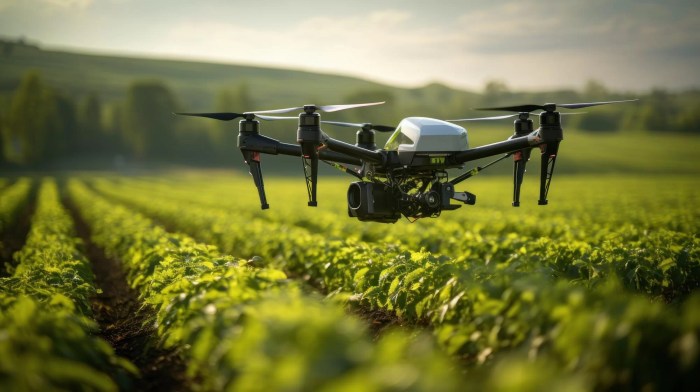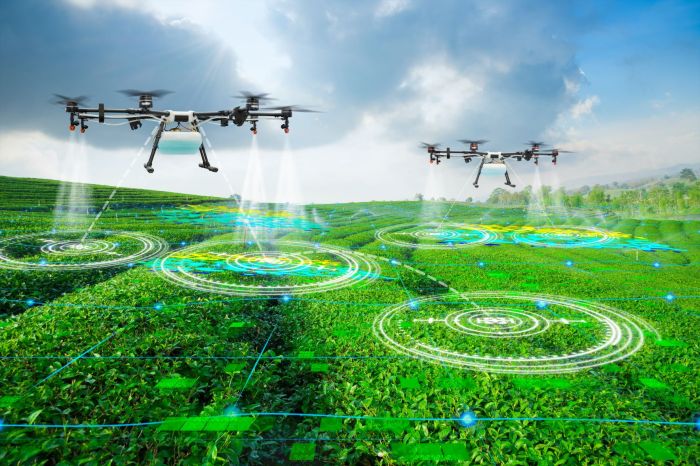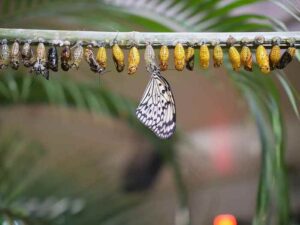
Agricultural drone technology is revolutionizing the way farmers approach crop management and livestock care. As drones become more advanced, their applications in agriculture have expanded significantly, providing farmers with tools to monitor and manage their fields more effectively. From enhancing precision farming to facilitating efficient pesticide application, the integration of drone technology is paving the way for a more sustainable and productive agricultural future.
This evolution of drone technology in agriculture not only offers practical benefits but also presents exciting opportunities for innovation. The ability to gather real-time data and perform thorough assessments of crop health ensures that farmers can make informed decisions, ultimately leading to increased yields and reduced resource waste.
Introduction to Agricultural Drone Technology
The agriculture sector has witnessed a remarkable evolution with the introduction of drone technology. Initially, drones were primarily used for military purposes and aerial photography, but their adaptability has made them invaluable in agriculture. Today, farmers leverage drones to enhance productivity, optimize resource use, and implement precision farming techniques. Drones provide numerous benefits, including increased efficiency, reduced labor costs, and improved crop management.
They allow farmers to collect real-time data, leading to informed decision-making about crop health and resource distribution. Agricultural drones play a crucial role in precision farming by enabling targeted interventions based on detailed analysis of field conditions, which ultimately enhances yield and sustainability.
Types of Agricultural Drones
There are diverse types of drones utilized in the agricultural sector, each designed for specific applications. Understanding the differences can aid farmers in selecting the right drone to meet their needs.
- Fixed-wing drones: These are ideal for covering large areas due to their long flight times and ability to fly at higher altitudes. They are often used for mapping and surveying large fields.
- Multi-rotor drones: These are more versatile and can hover, making them suitable for detailed inspections and close-range monitoring of crops.
| Type of Drone | Flight Time | Coverage Area | Use Case |
|---|---|---|---|
| Fixed-wing | Up to 90 minutes | Large areas | Mapping, surveying |
| Multi-rotor | 20-30 minutes | Smaller areas | Crop inspections, monitoring |
Applications of Agricultural Drones
Drones have a wide range of applications in agriculture, significantly transforming how farmers monitor and manage their crops and livestock. For crop monitoring, drones equipped with advanced sensors can assess plant health by capturing images in various spectrums, allowing farmers to detect issues such as diseases and nutrient deficiencies early. Furthermore, drones play an essential role in livestock management by tracking animal locations and monitoring their health through aerial surveys.In terms of pesticide and fertilizer application, drones can efficiently distribute these materials over vast areas, ensuring precise application that minimizes waste and environmental impact.
Business Accounting for Agricultural Drone Operations
Budgeting for drone investments is vital for any agricultural operation looking to incorporate this technology. A well-structured budget helps in forecasting costs and managing expenses related to drone operations, such as maintenance, software, and training.Tracking expenses can be accomplished through proper accounting software that categorizes costs effectively. This makes it easier to analyze spending patterns and adjust budgets accordingly.Evaluating the return on investment (ROI) for agricultural drones involves assessing cost savings and increased yields against the initial investment and ongoing operational costs.
Farmers can utilize metrics such as improved crop health and reduced labor costs to gauge the effectiveness of their drone investments.
Integration of Drone Technology in Business Agriculture
Integrating drone technology into agricultural businesses can streamline operations and improve efficiency. Farmers should first conduct an assessment of their current practices to identify areas where drones can add value.Implementing drone technology involves several steps:
- Research available drone options and choose the right model based on specific agricultural needs.
- Acquire necessary permits and ensure compliance with local regulations.
- Train staff on drone operation and data analysis for optimal use.
Challenges such as resistance to change and technical difficulties may arise; however, providing adequate training and demonstrating the benefits of drone use can facilitate smoother integration.
Impact of Agricultural Drones on Business Advertising

The imagery captured by agricultural drones can significantly enhance marketing efforts for agriculture-related businesses. High-quality aerial photos and videos provide compelling visual content that can be used across various platforms to engage customers.Drones are also instrumental in creating promotional content, showcasing the effectiveness and innovation of agricultural products and services. Successful advertising campaigns, such as those highlighting sustainable farming practices, have leveraged drone technology to capture the attention of potential clients.
Human Resources and Agricultural Drone Operations
Operating agricultural drones effectively requires specific skills and knowledge. Personnel involved in drone operations should possess a good understanding of aerial imaging, data analysis, and regulatory compliance.Training methods can include hands-on workshops, online courses, and simulation-based learning to ensure employees gain the necessary proficiency. Additionally, implementing robust safety protocols is crucial to minimize risks associated with drone operations in farming environments.
Ethical Considerations in Agricultural Drone Use

The use of drones in agriculture raises several ethical considerations. Issues such as data privacy and the potential for surveillance on farming communities must be addressed. Farmers should be transparent about how drone data is used and ensure it respects the privacy of individuals.Best practices for ethical drone operation include obtaining consent when necessary and using technology responsibly to benefit the agricultural community without infringing on personal privacy.
Future Trends in Agricultural Drone Technology
Emerging technologies, such as artificial intelligence and machine learning, are likely to influence the development of agricultural drones in the future. These advancements can enhance data analysis capabilities, enabling more precise decision-making in farming.Predictions indicate that drones will play a pivotal role in sustainable agriculture by promoting efficient resource use and minimizing environmental impact. Future advancements may also include longer flight times, improved sensor technology, and autonomous operations for better farming outcomes.
Related Business Sectors
The impact of agricultural drones extends beyond farming, influencing business consulting within the agricultural sector. Consultants can utilize drone data to provide insights into crop management and operational efficiency.The construction industry, particularly in agricultural infrastructure development, also benefits from drone technology. These drones can assist in surveying land and monitoring construction progress, creating potential partnerships between agricultural drone companies and other business sectors.
Conclusion
In summary, the impact of agricultural drone technology is profound, influencing every aspect of modern farming practices. As technology continues to advance, the future holds even more promise for enhancing agricultural efficiency and sustainability. Embracing these innovations is essential for farmers looking to remain competitive in a rapidly changing industry.
Common Queries
What are the main benefits of using drones in agriculture?
Drones provide farmers with detailed aerial imagery, enhance crop monitoring, improve precision in pesticide application, and save time and labor costs.
How much does an agricultural drone typically cost?
The cost of agricultural drones can vary widely, ranging from a few hundred to several thousand dollars, depending on the features and capabilities of the drone.
Do I need a license to operate a drone in agriculture?
Yes, in many regions, operators must comply with local regulations and may need a license or certification to operate drones for commercial purposes.
How can drones improve crop monitoring?
Drones enhance crop monitoring through the use of high-resolution cameras and sensors that can detect plant health, moisture levels, and nutrient deficiencies.
What role do drones play in livestock management?
Drones assist in livestock management by monitoring animal locations, assessing pasture conditions, and even counting livestock, which saves time and improves efficiency.




